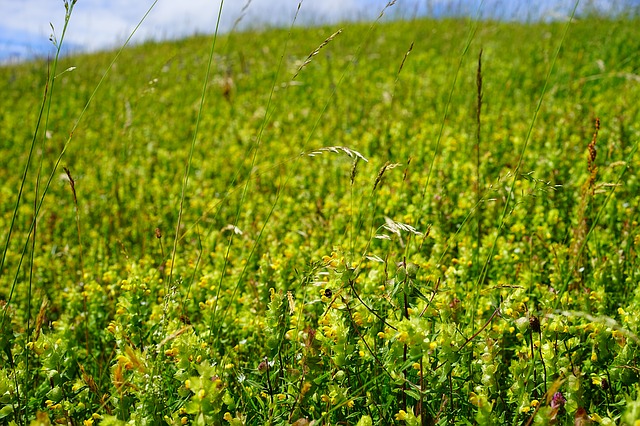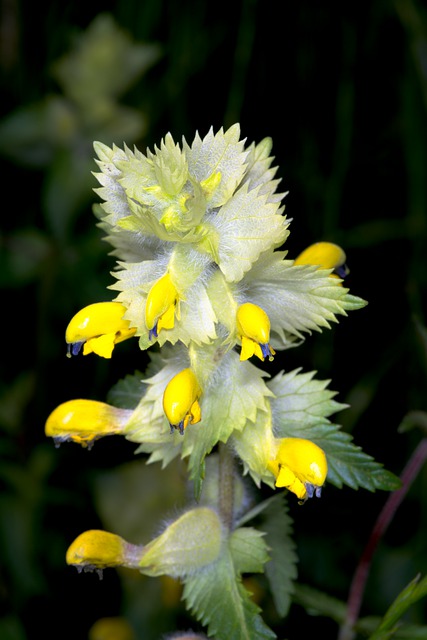 |  |  |  |  |
 |  |
Yellow-rattle has a weak root system, which consists of a taproot and roots covered with gaustoria - the plant's food intake organs, with which it absorbs the roots of the neighboring plant. Yellow-rattle is a parasitic plant and a saprophyte at the same time, it is able not only to suck on living roots, but also to receive food from dead ones. Simple, four-sided stems tend to grow up to 50cm in height. Sessile, oppositely arranged leaves are located along the entire stem of the plant, usually they have a smooth or toothed edge. Flowers irregular, double-lipped, yellow. The upper lip is helmet-shaped, the lower three-parted, flat. Flowers singly in a rather dense inflorescence at the end of the stem or branches in bracts. Fruit - compressed, dry, brown-yellow, round box. Blooms from May to September.
Large rhinanthus (Rhinanthus serotínus) and small rhinanthus (Rhinanthus minor L.) can be found in Latvia.
The above-ground part of the plant is used for medicinal purposes. It is harvested immediately after flowering and seed ripening. The plant is dried by spreading it in a thin layer, in a shaded and well-ventilated place. The drug is stored in paper bags for up to 3 years.
Chemical glitters have been studied quite well. Iridoids have been found in them, including catalpol and isocalpol, anguside, aucubazide; flavonoids, including diosmin, apigenin, cosmos, cinnaroside, as well as carotonoids such as beta-carotene, lutein and their derivatives, sucrose, pectin substances, mannitol and dulcite, steroids and acids - chlorogenic acid, ascorbic acid, benzoic acid and phenolcarbonic acid, essential oil and tannins .
Medicinal significance
The bactericidal and antiviral properties of the plant are related to the iridoids present in it, which are characterized by high biological activity. Benzoic acid has antifungal and antimicrobial activity. The toxicity of the plant is related to the alkaloids contained in it.
In folk medicine, Yellow-rattle is used to treat bronchitis, colds and flu, the throat is rinsed with a decoction of the plant, in case of angina. Yellow-rattle preparations are effective in case of headache, arrhythmia and atherosclerosis. Decoctions and infusions are used as a diuretic, used as an effective preparation for the treatment of furunculosis and STD diseases. Externally, the plant is used to rinse festering wounds and to treat skin diseases, including fungal diseases and viral scrofulosis. The plant also has insecticidal properties and its extracts can be used against lice and nits - for rinsing.

